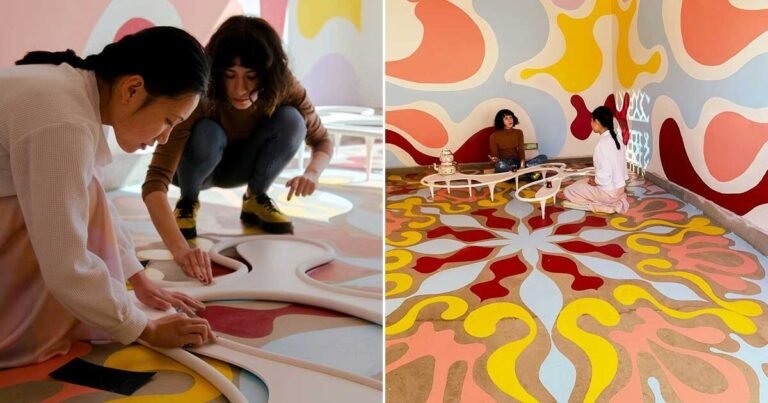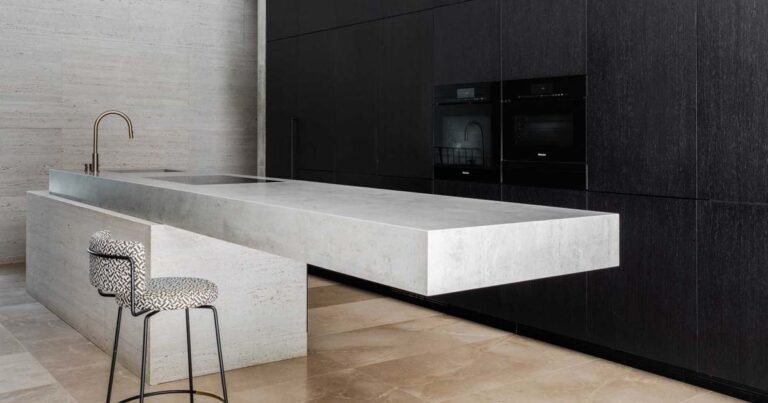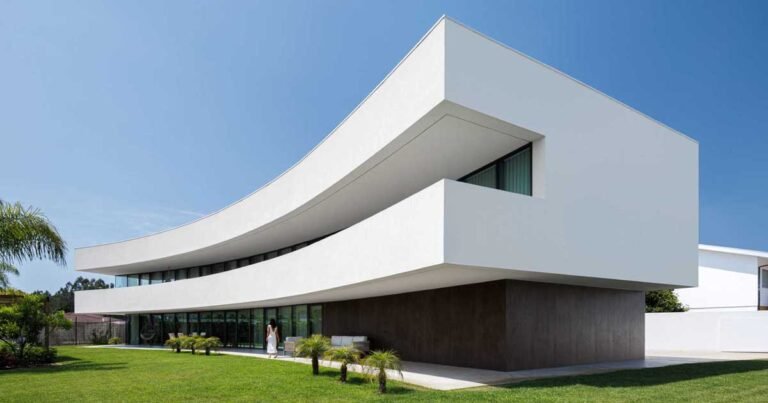Tour a Dreamy Mumbai Residence with Waterfront Views
Of the many adjectives that come to mind when one walks into the sumptuously stylish Marine Drive apartment of Cecilia Morelli and Rohan Parikh—sweeping, striking, inviting, vibrant—khichdi is not one. Yet Cecilia references the desi dish, as well as the French slang word bordel (“chaos”) to describe her recently renovated home. The two-story, 5,000-square-foot residence unites global and local sensibilities in a stylish manner that’s unabashedly “glocal,” so to speak. The outcome: a sophisticated yet comfortable dwelling for the family—which includes the couple’s six-year-old, Gaia, and two dogs—that is both respectful of tradition but not entirely bound by it. It’s Paris meets Palm Springs meets Los Angeles meets Mumbai.
A co-founder of Le Mill, a decade-old multi-brand concept store for fashion and home decor, the 39-year-old half-French, half-Italian Cecilia fused her multicultural, multi-city upbringing with her adopted homeland’s architectural and artisanal aesthetic. Ten years after moving into her 1930s-era Art Deco home, she had the opportunity to combine her existing apartment with the one upstairs; an exciting prospect, since Cecilia likes nothing more than to design interiors. “I am a crazy person who falls asleep at night visualizing the space I am creating,” she says. “I put the objects in the space in my mind—I don’t need to see them physically—and I can place them. That’s how my brain works.”
The Parikhs knew they wanted to retain their apartment’s maritime heritage, and utilize local crafts and materials to underpin a strong architectural language. They also wanted their significant art collection to have pride of place. Samuel Barclay of Mumbai-based firm Case Design was the obvious choice to help realize their vision. “I wanted a house that was pure, and by that, I mean a purity in [terms of the] use of materials,” says Cecilia. “I knew that Case could bring the best out of a material, whether it’s wood or plaster or cast iron or cast bronze. They are people who really deeply respect the modernist heritage of Indian design that is often overlooked in new developments and new architecture.”
Barclay, who knew Cecilia both professionally and personally (Le Mill sells Case Design products) says that the project was a meeting of the minds. “It was trying to blend their aspirations for a home and our ideas about space and materiality.” He notes that, historically, Marine Drive apartments tended to be quite compartmentalized. The Parikhs wanted free-flowing rooms that opened to the view. Barclay, fellow architect Dhwani Mehta, and designer Paul Michelon—all from Case Design—joined the two flats via sculptural cast-in-place concrete and IPS (Indian Patent Stone), to create a formal living and dining area near a pantry-cum-kitchen, with a more relaxed family room and bedrooms upstairs. The downstairs also houses Rohan’s office and an en-suite guest room, while the upstairs includes Cecilia’s office space, Gaia’s delightful tree house playroom, an eat-in utility area, and Cecilia’s generous closet.
Taking inspiration from BV Doshi and Le Corbusier, as well as modern elements in Indian design, the floors are IPS-imbued with natural color pigments developed by Malene Bach, the Copenhagen-based visual artist, and crafted by Rameshwar Bhadhwa and his firm, Mortar Construction. Bach and Mehta toiled alongside Gujarati artists to devise just the right hues for the pale-green staircase, the deep red in the enclosed lower-level balcony, and custom-developed silicate paint for all the walls in the home. The family’s bathroom tiles are handmade and sourced from Moroccan artisans. The woodwork retains some of the original Burma teak from 1932 that can be found in the door frames. Michelon designed several pieces of bespoke furniture, including a stone console in front of a sea-facing window that took six months to produce. Case also designed every light switch, door handle, and keyhole, while working alongside Poonaram Suthar of Vishwakarma Furniture on the carpentry. The art—which reads like a laundry list of some of the most important contemporary artists in India and overseas, including Shilpa Gupta, Bharti Kher, Jitish Kallat, Sudarshan Shetty, Goutam Ghosh, Oscar Murillo, and Amitesh Shrivastava—acts as a perfect complement.







